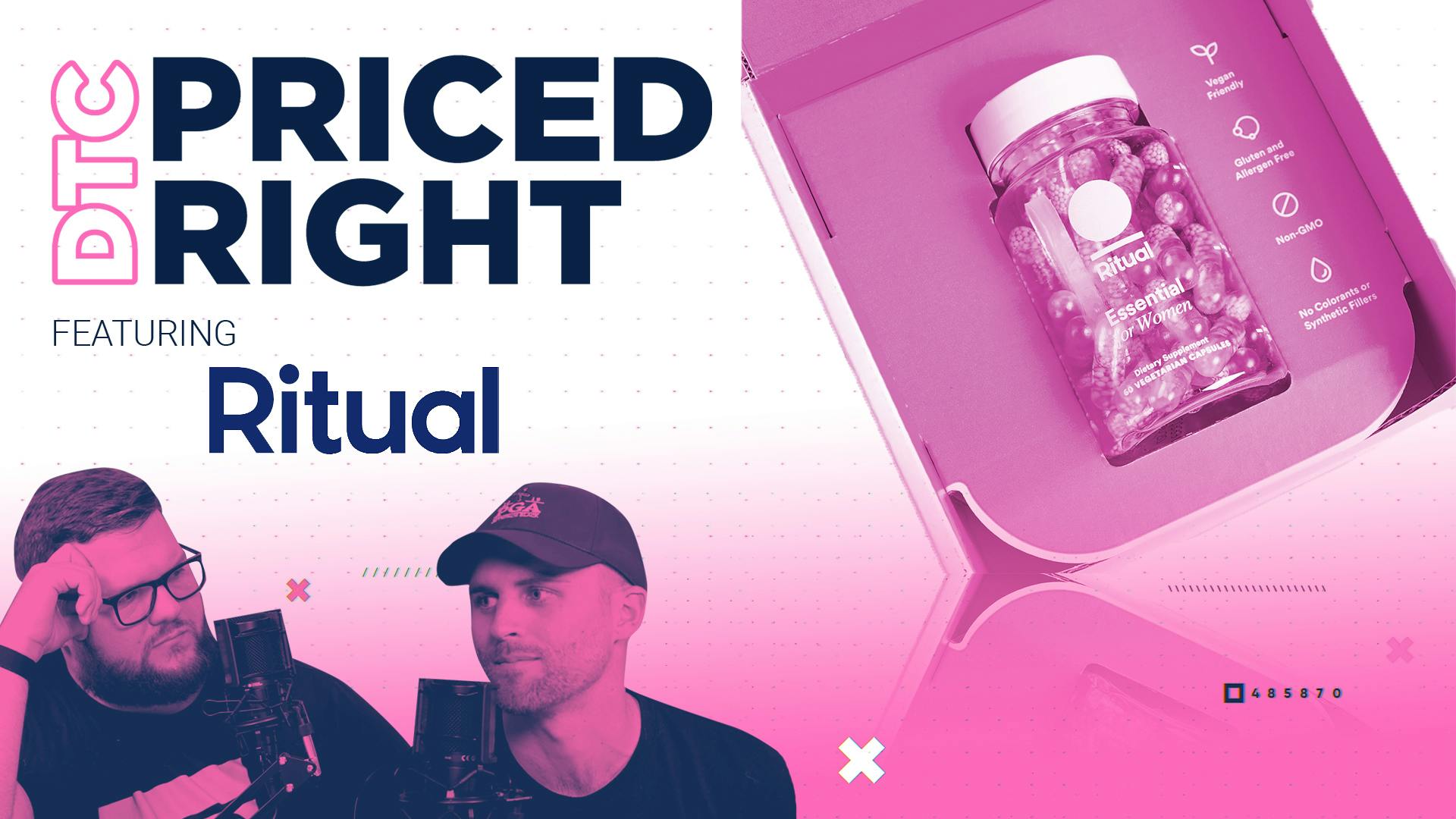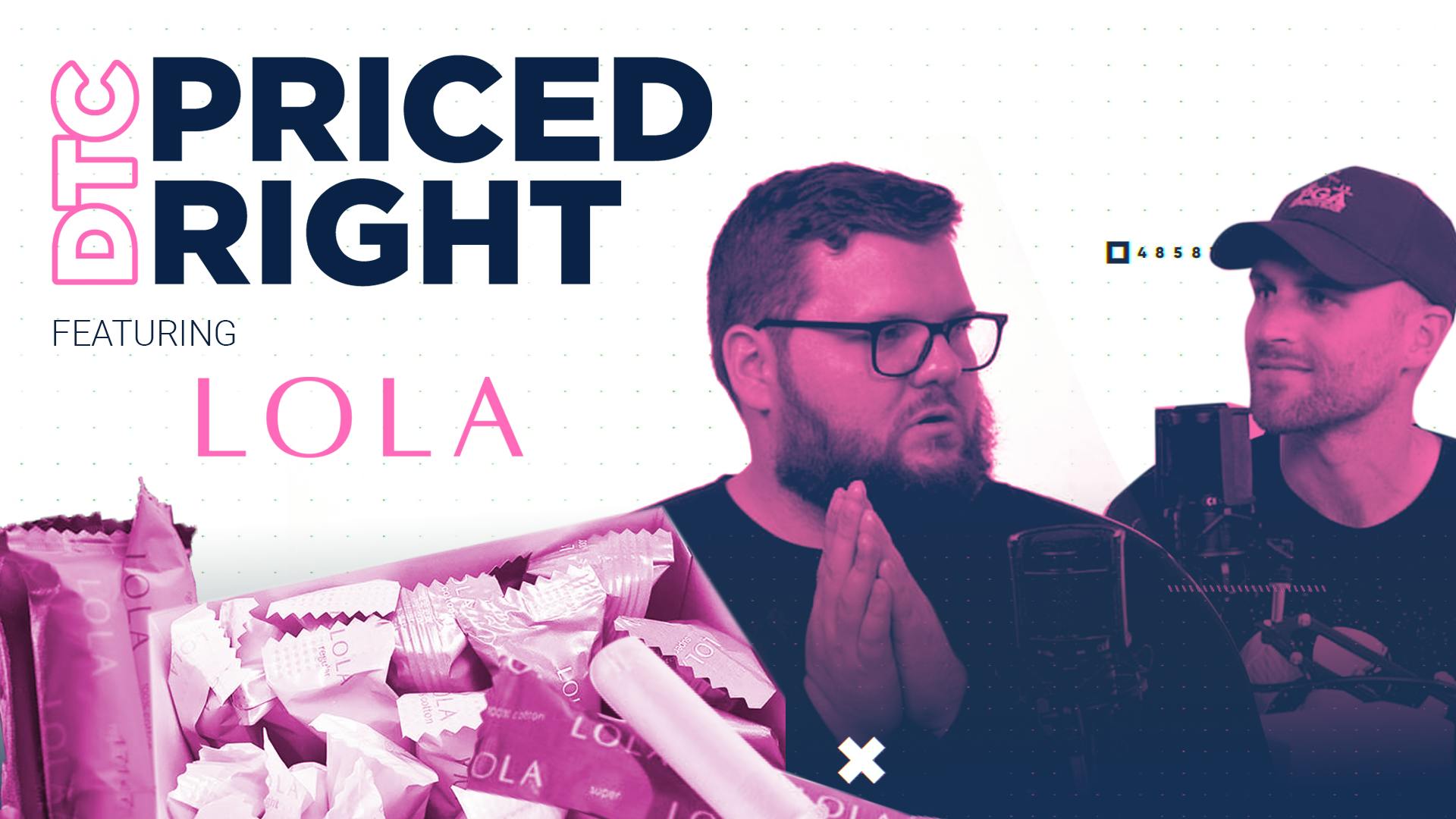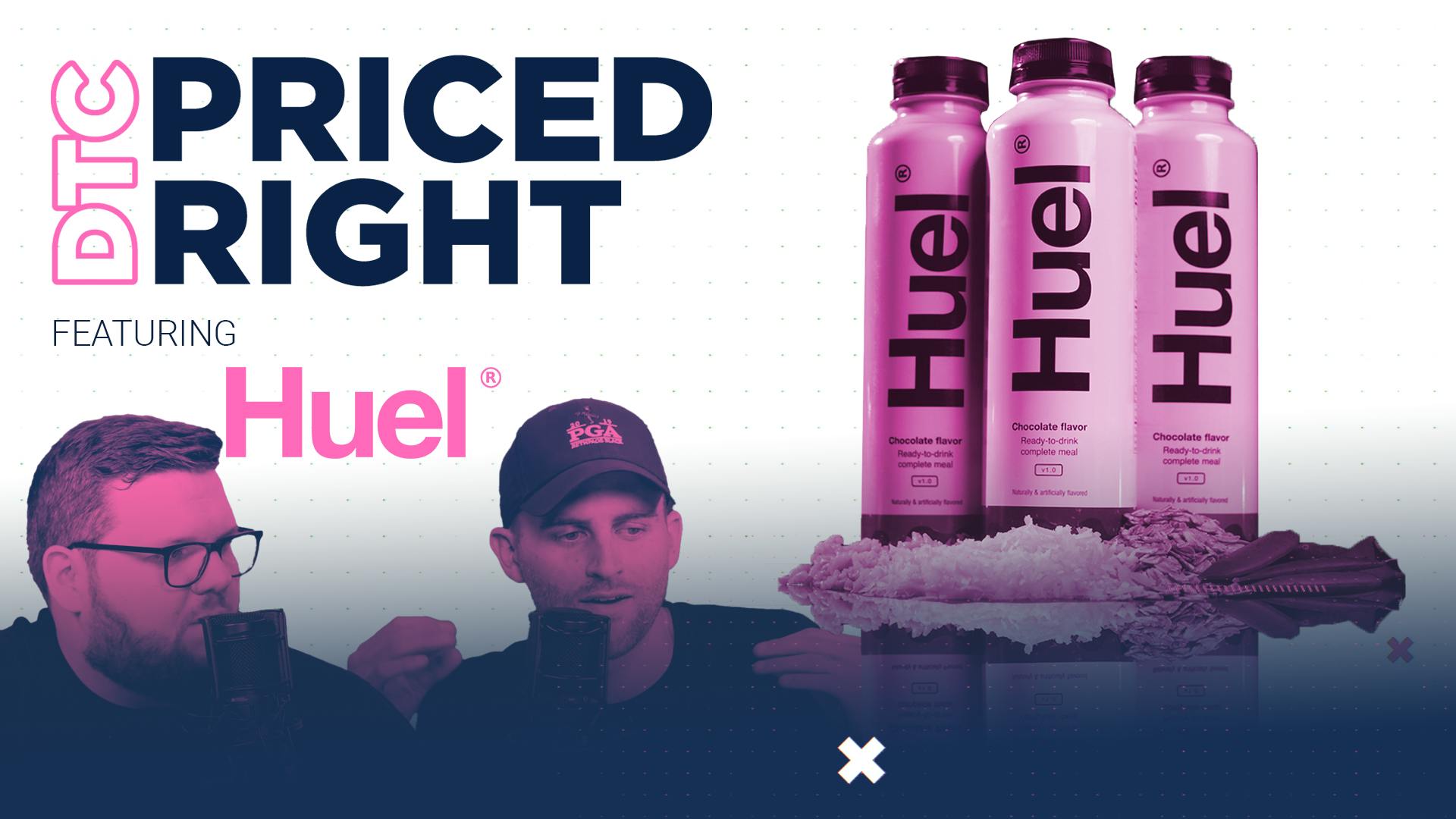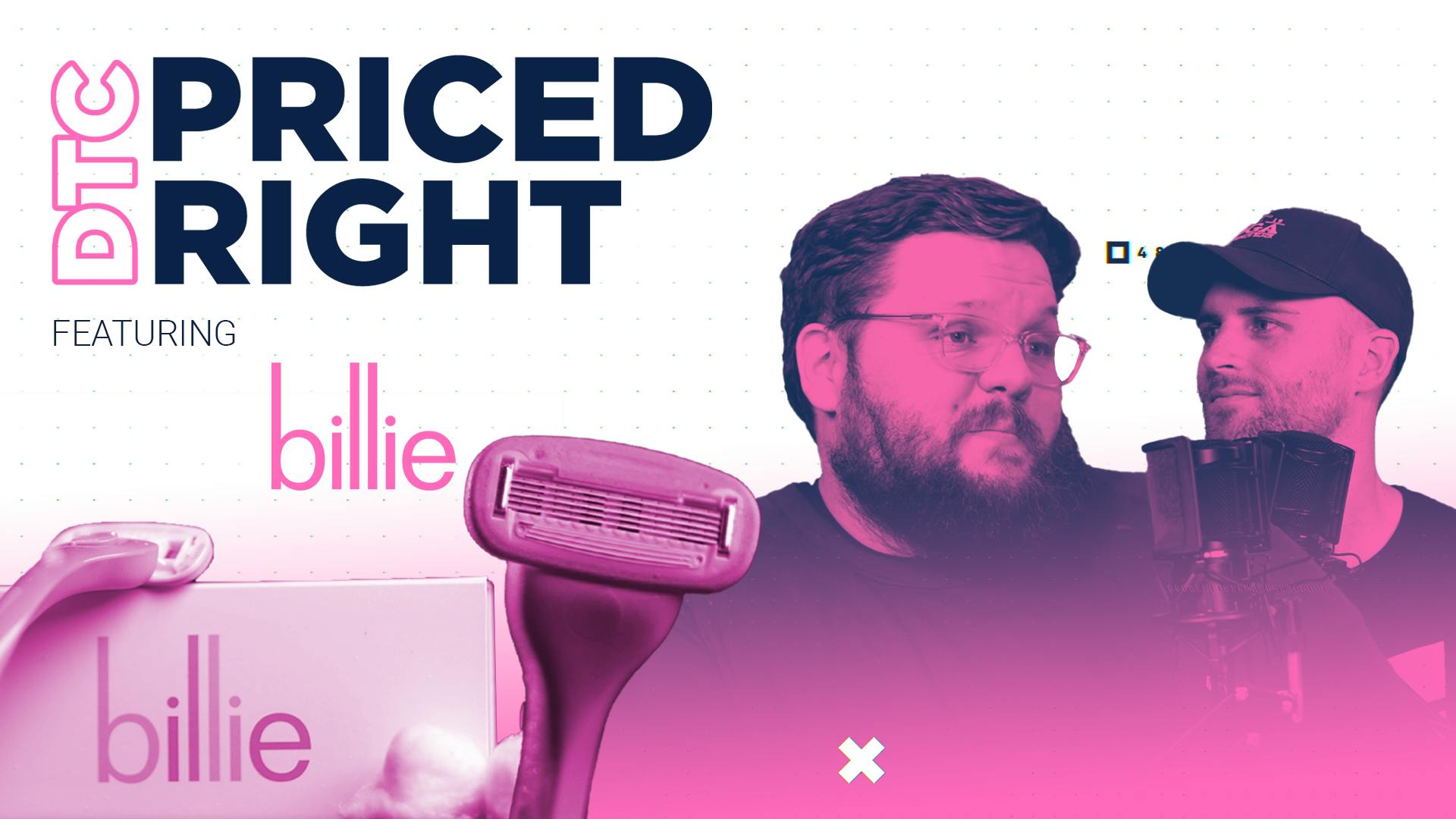
Who Gives A Crap is on a roll
This episode might reference ProfitWell and ProfitWell Recur, which following the acquisition by Paddle is now Paddle Studios. Some information may be out of date.
Please message us at studios@paddle.com if you have any questions or comments!
Below are some valuable takeaways you can use for your own business.
This week, we're taking on the ultimate throne: the porcelain throne. Welcome to the world of Who Gives A Crap, a subscription toilet paper service. I love so much of what they've done—from their cause-driven dedication to their branding. It's just so good. They start with something that's as simple as toilet paper, which is a huge market, then use it to make the world a better place while making some money (which is always good).
We’ll walk through what Who Gives A Crap is doing really well in terms of their monetization strategy, and what could be improved. We'll wrap this up into a nice case study for you to get your own monetization right.
From the get-go Who Gives A Crap was inspired to do something good for the world. And they're doing it, even in a $31-billion industry. But is their cause and quality enough to continue growing long term?
Below are some valuable takeaways you can use for your own business.
- Causes and quality are key differentiators
Aligning your brand or product to a social cause can increase your retention and willingness to pay. In Who Gives A Crap’s case, our data showed that willingness to pay jumped about 30% when their cause was added to the positioning. And adding their eco-friendly focus to the positioning also increased willingness to pay by about 20%.
undefined - Branding is crucial and drives willingness to pay and retention
Ensure a great experience from the first visit all the way through checkout with a clear thesis and great microcopy. Who Gives A Crap does a phenomenal job with their branding beginning with their name—every part of their packaging reinforces why you should buy from them and helps justify the premium price point.
Taking the time to develop your brand can boost retention an average of 15-20%. And those who had a positive or very positive perception of a brand were ready to pay about 20-30% more. - Donation add-ons can help retention and your cause
Donation add-ons not only help keep your customers longer, but also help your cause. Who Gives A Crap is not currently offering this, and for such a cause-driven brand, this is a massive opportunity they're missing out on.
Based on our data, one add-on increases retention by about 7-10%. And those with two or more measured at about 10-15% higher retention.
undefined
Who Gives a Crap
If there’s anything we learned from the 2020 pandemic, it’s that anal hygiene is important. But the introduction of mass-produced and commercially available toilet paper, wasn’t until the mid-1800s. Before then, people relied on less pleasant methods to wipe their bums, which included wiping with stones, seashells, animal furs, communal sponges, hygiene sticks, leaves, and even broken bits of pottery, just to name some.
Luckily, toilet paper has become a common necessity around the world and a cornerstone of a hygienic lifestyle. However, not everyone is so lucky. Roughly 40% of the global population doesn't have access to toilets. And around 289,000 children under five die every year from diarrheal diseases caused by poor water and sanitation.
These staggering numbers inspired three friends, Simon Griffith, Danny Alexander, and Jehan Ratnatunga to found Who Gives a Crap—a toilet paper and advocacy company—in July of 2012 out of Australia. And to get started, well, let’s just say it took a butt load of effort.
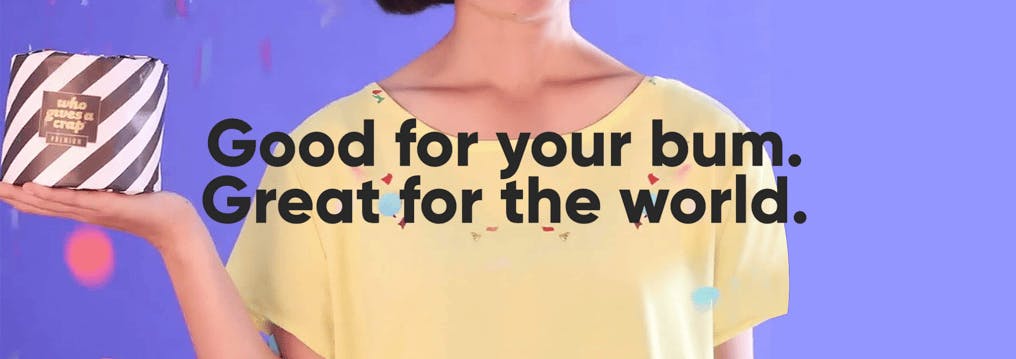
To raise money, Simon sat on the loo of their drafty, or rather, draughty, warehouse, refusing to move until they raised enough pre-orders to start production through a crowdfunding campaign on IndieGoGo. Fifty hours and one cold booty later, they raised over $50,000. By March, 2013, they delivered their first product and haven’t stopped since.
Who Gives A Crap's success
There’s two factors that have added to their success:
First, Who Gives a Crap truly gives a crap and from the get-go their commitment to a global cause was built right into their business model. They donate 50% of their profits to help provide access to clean water, sanitation, and hygiene education in the developing world—allowing them to scale while also making a worldwide impact.
Which brings us to their second success factor—their clever and witty marketing. They’ve built a loyal following around this. Everything from their branding, copy, design, and packaging are done incredibly well. Because of this, Who Gives a Crap has built a loyal and passionate following.
So, does this toilet paper really stand up to your toosh? Well, over 7,500 five-star reviews give it a resounding yes. With the choice of super soft or super strong and by only using 100% recycled fibers, bamboo, or sugarcane, Who Gives a Crap products are free of dyes, chemicals or scents—while saving water, carbon emissions and trees all at the same time. And if your booty doesn’t believe it’s the best toilet paper in the world, send your rolls back (the unused ones) and they’ll give you a full refund.
It’s pretty clear that people’s bums are loving this toilet paper. In addition to their growing success, Who Gives a crap has been able to give 400-million people access to toilets, and to date has donated over $5.7 million to their cause with no plans of stopping... As their website states: Good for your bum. Great for the world.
This toilet paper is on a roll
They're in a $31 billion industry — it's insane! And remember when all the super fun work from home stuff started with COVID? Toilet paper was the thing being ripped off the shelves; it became like a currency. What I love about companies like Who Gives A Crap is that they're not only a product that is presumably better, but also a business hoping to make the world a better place.
You're seeing more and more of these brands, which I like to call "utility plus" products. Tom's was the first big one, at least in modern times, that had charity as a huge element of the business model. What really drew me to Who Gives A Crap is that their mission is front and center on their website. It's one of those things that really contextualizes everything they're doing. They're making a splash in this $31 billion market that big names like Charmin and Georgia-Pacific having been dominating for decades.
It's actually surprising to me that it's taken so long for a disruptor to come in with this kind of eco-friendly vibe. The commitment to qualities like organic nature, no dyes, et cetera, helps businesses to capture some of the market share. Then there's the next step, which is the cause base. Who Gives A Crap is actually combining those elements really, really beautifully.
Cause is front and center
They put the cause front and center to re-contextualize a commodity. We've talked about this with a couple other products but, basically, toilet paper is a commodity. No matter how much quality you pour into it, there's probably no toilet paper that's truly "ten times better!". You'll still be competing with the lowest common denominator version. Who Gives A Crap gets around this by highlighting their cause. If you look at their pricing page, it literally starts off with, "See how you're making a difference. Watch how you're making a difference." The whole concept of building toilets around the world is just so ingrained within the brand and product. It gets you those warm and fuzzies, but it also makes you forget how much normal toilet paper costs. Suddenly, you're not just buying toilet paper, you're buying a cause.
Great Internationalization
Their internationalization is fantastic. It's just so good, and many other brands are simply terrible. We talk about it all the time - a lot of brands, whether B2C, DTC, or B2B, are terrible at internationalization. These guys have really done a good job though. I fired up the VPN to look at what the website looks like in the UK versus other countries. They have the currency symbol updates, and the pricing appears that it's somewhat different in each region, which I think is good.
It comes back to that old adage: everybody poops. Everybody needs toilet paper! What I like to bring it back to is that, if you're in a developed country, why wouldn't you buy toilet paper like this? Why wouldn't you support these things if you can afford to, right? I presume that there's dirt cheap toilet paper that some people need to buy. There's obviously tons of people who wouldn't be able to access things like this. But it's one of those things that, if you're in the U.S. and you work at a tech company, why wouldn't you buy toilet paper from here?
Causes and quality are key differentiators
We talk about this a lot, but it's a point that can really be accentuated with data. Throughout this entire set, you see no inks, dyes, or scents. The eco-friendly vibe is almost expected at this point, especially if you're buying toilet paper from a website.
Then, you look at 50% of profits going to build toilets. This is something that people will really care about. So the way we came at this data is that we priced, using our software, just the toilet paper. We didn't describe any value propositions or positioning. Then, we overlaid different positioning on top of that generic description and basically measured the increase in willingness to pay.
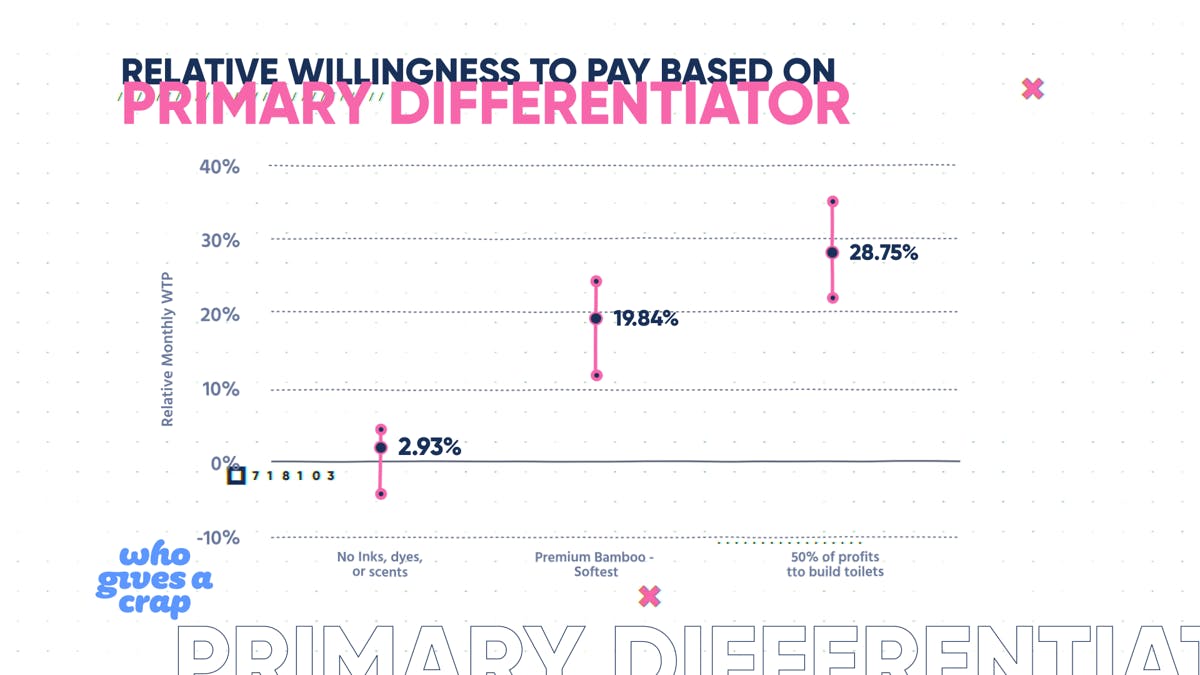
As soon as we put, "Hey, there's this cause attached to it!" the willingness to pay jumped about 30%. That's pretty out of control for such a commodity-type product. Even things like Premium Bamboo - Softest, were boosting it by about 20%. It's so cool to see these things shake out, especially when you think that, again, we're in a commodity market.
Good branding drives willingness to pay and retention
It's kind of funny—brand wasn't necessarily a thing in the early days. You just wanted to get things out there. Now, you can't start a DTC or even a B2B company without taking brand into consideration. And these guys absolutely crush it.
So the name, Who Gives A Crap. It bakes the cause into the brand. By purchasing a cause-based brand, you're answering the question and demonstrating that you give a crap. Different rolls also display different information about the business, like, "We believe in plying it forward." It talks about the 50% of profits being donated. Every part of the package reinforces why you would buy from Who Gives A Crap and also helps to justify the premium price point.
Even the microcopy on their website is incredible. The writers are either hired internally or the founder has an amazing writing presence. It may seem small, but it is really helpful for the brand in terms of boosting willingness to pay and retention. The numbers prove it.
We took a bunch of companies and basically aggregated their retention statistics, looking for an affinity for a particular brand. What we found is that those who took the time to develop their brands had really, really high affinity. It's seen in an average 15-20% boost in their overall retention. That's a ton, especially when you're talking about a DTC brand. In addition to that, willingness to pay for those who had developed a high affinity was quite high.
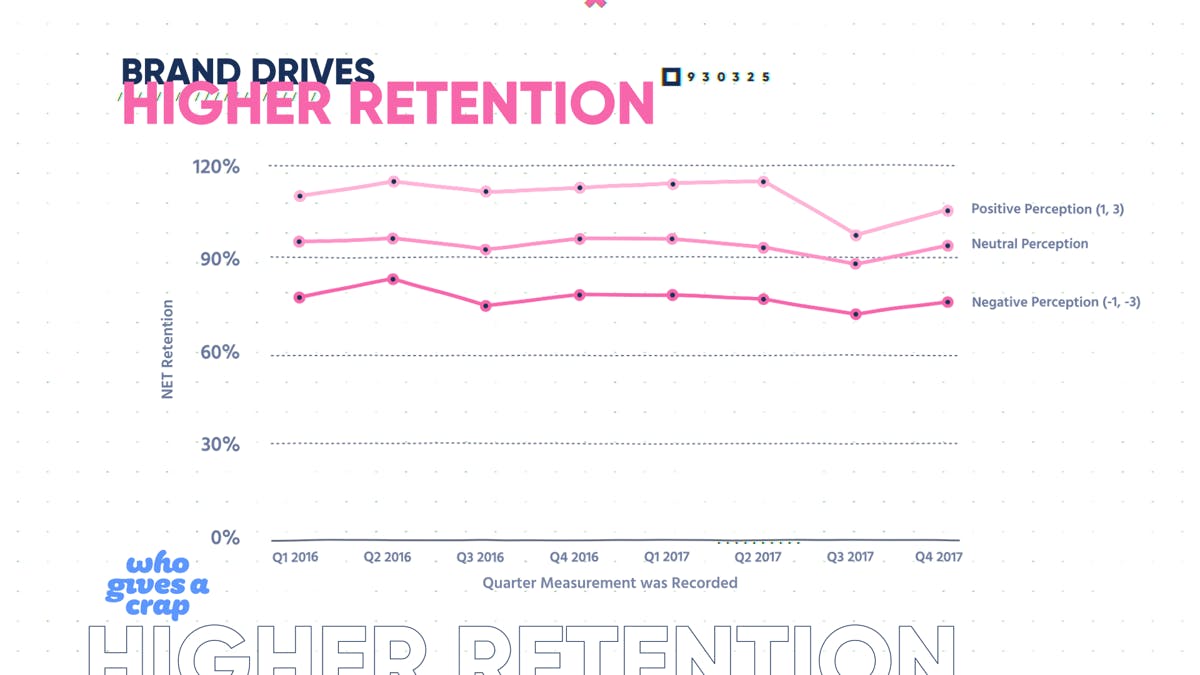
Those who had a positive or very positive perception of a brand were ready to pay about 20-30% more than those who were neutral. For Who Gives A Crap, it's hard to have anything but a positive perception. You're not going to get mad at someone who's trying to save the world.
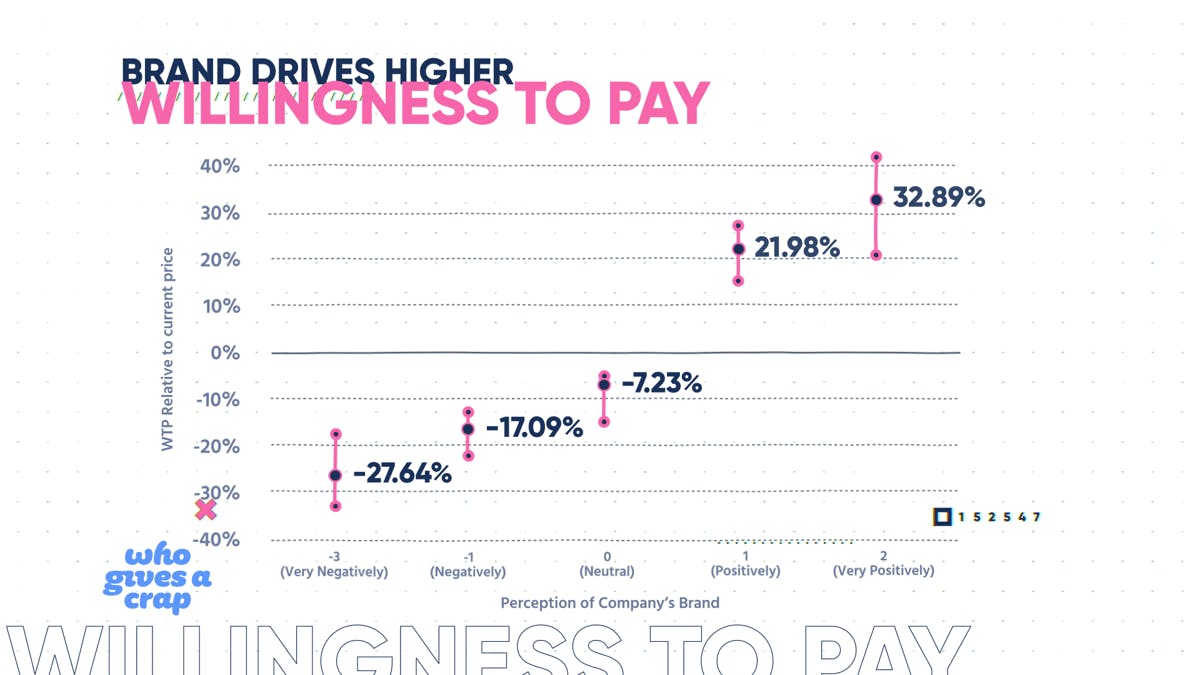
The other cool thing about their copy is its playful quality, even though it references a very serious cause. Their writing is light, entertaining, and fun, making the reader feel good. It focuses less on, "Hey, people are dying," and more on, "Don't worry, we can fix this together." This optimism is crucial, and a great lesson for you to take back to your own brand. The copy is worthy of your focus, and you're going to have to put effort in. It actually helps. Back in the day, we thought it was all about the product. Today, we know it's all about the brand.
Donation add-ons help boost retention
This is one thing that Who Gives A Crap isn't doing right now that they should be: asking people in the flow if they would like to make an additional donate. There are some other brands that do this, and we gathered data to figure out what this could like like for our Crappy friends.
We gathered "willingness to pay" data on a bunch of people who had an affinity for the cause vs. no affinity for a cause. We had them pick a cause and rate how much they actually cared about it. Then we asked, "How much would you be willing to pay on top of an already existing subscription for extra donations?"
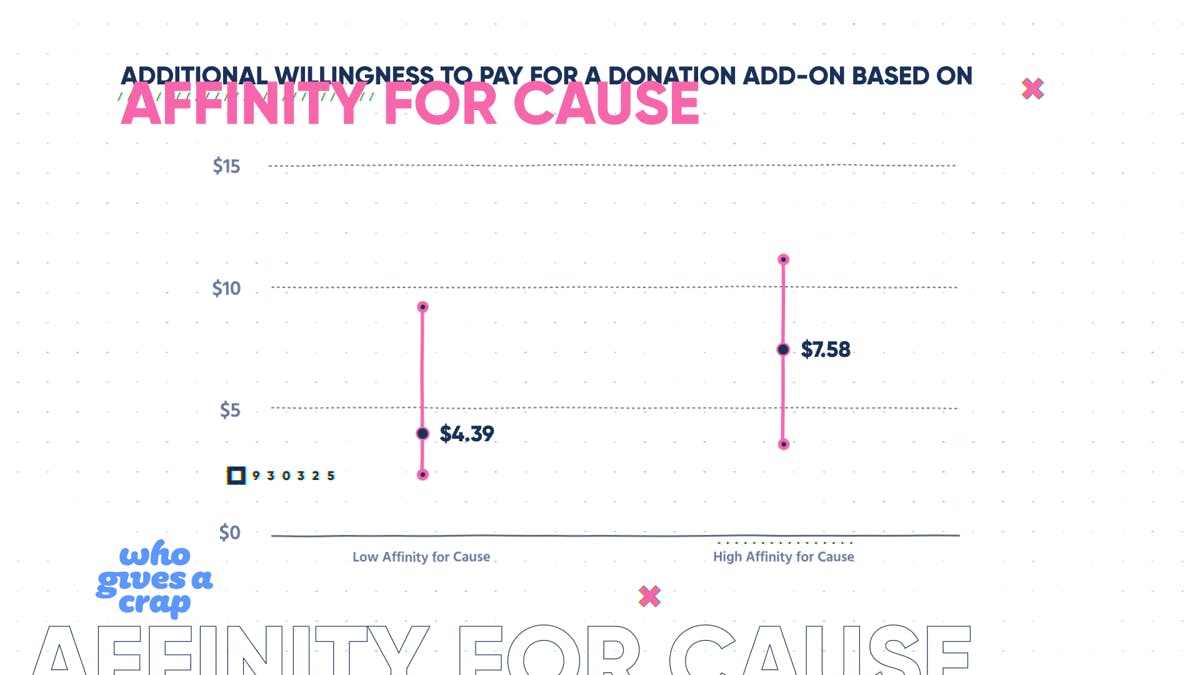
What's fascinating is that those who had a high affinity for the cause were willing to pay about $7-$10 extra per month as a donation. Even those who had a lower affinity were offering about $5. All of a sudden, you're donating a considerably larger amount and helping to build more toilets. We've seen time and time again that folks who pay add-ons in addition to what they're purchasing tend to have much higher retention.
This data is from a bunch of different comp customers and many different products. We measured, "What's the increase in their retention rate based on the number of add-ons that they have in their core plan?" With one add-on, you're looking at about a 7%-10% relative higher retention rate. In the world of DTC, that's a lot. Those folks who have two, three, or more add-ons are measured at about 10%-15% higher retention. That's huge in the long run.

It's just one of those things to think about. I didn't see it in Who Gives A Crap's checkout flow and I kept thinking, "I must be crazy." Because this is such a cause-driven brand. They should be taking the time to ask for an additional donation. It's an overlooked step, but it'll help your cause and your brand.
- Causes and quality are key differentiators. Quality doesn't have as much of an impact as those who have a very high affinity for a cause. The takeaway for your business here is to invest in a cause. It doesn't have to be something crazy or as intense as Who Gives A Crap, who placed their cause at the center of their business. You can stick it at the margins, but give people a little something extra to care about.
- Branding is huge. Huge! Especially with a commoditized product. It helps drive willingness to pay and retention. And, yeah, it might sound obvious to tell a DTC person, "Hey! Brand is important!" But it's one of those things where you need to ensure that, from first visit all the way through checkout, the microcopy is on point, and that you have a whole thesis.
Who's up next?
Next week, we'll have another highly-branded product in the supplement and wellness space that I've been following for a bit. I've really appreciated how they've got their messaging down, as well as their branding and each step of the product life cycle. That's a product called Ritual.
